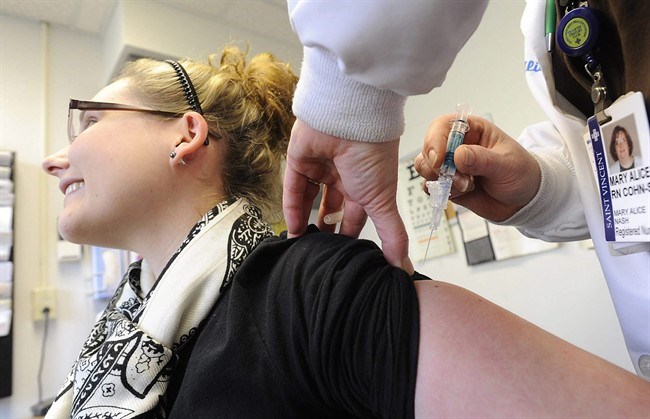TORONTO - Canadians who got a flu shot this year may have cut in half their risk of getting sick enough from flu to require medical care, new data suggests.
"It seems that this vaccine is cutting your risk of influenza in half, which ... is still important protection, especially if you're a high-risk person," said Dr. Danuta Skowronski, a flu expert with the British Columbia Centre for Disease Control who oversees the surveillance network from which the data was drawn.
Skowronski said an important message from the data relates to the care of people who are at high risk of the complications of influenza if they become infected.
Doctors caring for such patients shouldn't assume that because they got vaccinated they won't contract influenza this winter, she said. For these people, use of antiviral drugs may be warranted if they become ill.
The mid-season flu vaccine effectiveness estimate is drawn from a surveillance network of a couple of hundred family doctors and community physicians in the country's five most populous provinces: Alberta, British Columbia, Manitoba, Ontario and Quebec.
The network is funded by the Canadian Institutes of Health Research, with support from the involved provinces.
Skowronski and colleagues crunched data submitted by physicians in the network over the weekend.
This type of work studies people who seek care for influenza-like illness, looking to see if they are actually infected with flu and whether they had received a flu shot.
It is similar to a U.S. effort to measure the effectiveness of flu vaccine there which is funded by the U.S. Centers for Disease Control.
The U.S. CDC released interim vaccine effectiveness estimates late last week. In their analysis, this year's vaccine reduces the risk of requiring medical help for flu by 62 per cent overall, and by 55 per cent for influenza A viruses.
Flu vaccine offers protection against two subtypes of influenza A, H3N2 and H1N1, as well as one type of influenza B virus.
The U.S. figures were based on a sample of patients in which the breakdown of flu infections was 57 per cent for influenza A and 43 per cent for influenza B.
The B component of the vaccine appears to be offering better protection this year than the A, about 70 per cent. And because the U.S. sample had such a large proportion of B cases, that had the effect of raising the overall estimate, Skowronski said.
But the Canadian figures are a closer representation of the proportion of A versus B viruses that are causing illness this winter in this country, she said. So far this flu season H3N2 has been responsible for the lion's share of sa国际传媒's cases.
In the interim analysis, 90 per cent of the positive cases were infected with influenza A and 10 per cent were infected with influenza B.
The A component of the vaccine appears to reduce one's risk by between 45 and 50 per cent, Skowronski said. There were too few B cases to calculate a reliable estimate, and the overall estimate for the flu shot was 47 per cent.
Skowronski said an additional analysis will be generated at the end of the flu season.


